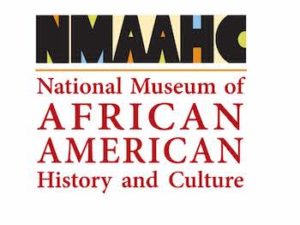
*The National Museum of African American History and Culture (NMAAHC) opened on this date in 2016.
The museum's building, designed by David Adjaye, is on the National Mall in Washington, D.C. It opened with close to 37,000 items in its collection related to community, family, the arts, religion, American Civil Rights, Slavery, and Segregation. President Barack Obama led the museum's opening ceremony. Early efforts to establish a federally-owned museum about African American history and culture can be traced to 1915. However, the modern push for such an organization did not begin until the 1970s. After years of little success, a much more serious legislative push began in 1988, leading to its authorization, a Smithsonian Institution museum established in December 2003. A site was selected in 2006.
The concept of a national museum dedicated to African American history and culture can be traced back to the second decade of the 20th century. In 1915, black veterans of the Union Army met at the Nineteenth Street Baptist Church in Washington, D.C., for a reunion and parade. Frustrated with the racism they still faced, the veterans formed a committee to build a memorial to various African American achievements.
Their efforts paid off in 1929 when President Herbert Hoover appointed Mary Church Terrell, Mary McLeod Bethune, and ten others to a commission to build a "National Memorial Building" showcasing African American achievements in the arts and sciences. However, Congress did not back the project, and private fundraising also failed. Although proposals for an African American history and culture museum would be floated in Congress for the next 40 years, none gained more than minimal support.
Proposals for a museum began circulating again in Congress in the early 1970s. In 1981, Congress approved a federal charter for a National Afro-American Museum in Wilberforce, Ohio. The museum, built and funded with private money, opened in 1987. In the early 1980s, Tom Mack founded the National Council of Education and Economic Development (NCEED). Mack intended to use the non-profit group to advance his ideas about economic development, education, and the arts in the Black community. Emboldened by Congress's action in 1981, Mack began using the NCEED to press for a stand-alone African American museum in D.C. in 1985.
He contacted (then) Representative Mickey Leland about his idea for a national museum focusing on African Americans. Leland sponsored a non-binding resolution (H.R. 666) advocating an African American museum on the National Mall, which passed the House of Representatives in 1986. The congressional attention motivated the Smithsonian to improve its presentation of African American history. In 1987, the National Museum of American History sponsored a major exhibit, "Field to Factory," which focused on the African American Diaspora out of the Deep South in the 1950s.
In 2007, the NMAAHC became the first major museum to open on the Web before completing a physical structure. The website included the museum's first exhibit in New York City and was designed to encourage collaboration between scholars and the public. The main feature of the web-based initiative was the Memory Book application, which allowed individuals to contribute pictures, a story, or an audio application to spotlight unique experiences in African American culture.
The Smithsonian Institution listed that the number of items in the museum collection 2015 had grown to 33,000. Items obtained by the museum were initially received, conserved, and stored at the Smithsonian Museum Support Center in Suitland, Maryland. Dozens of permanent curatorial staff and temporary contractors accessed the items, repaired them, and conserved them in a temperature- and humidity-controlled environment.
Renée Anderson, the museum's head of collections, oversaw the effort. After artifacts were selected for display, graphics and labels for each item were manufactured. Display cases for each item were also purchased, and exhibiting mounts or specially designed cases were handcrafted for particularly fragile, important, or unusually sized objects. Museum officials said all artifacts and displays would be moved into the new museum in the summer of 2016, along with the museum's 175 full-time employees.